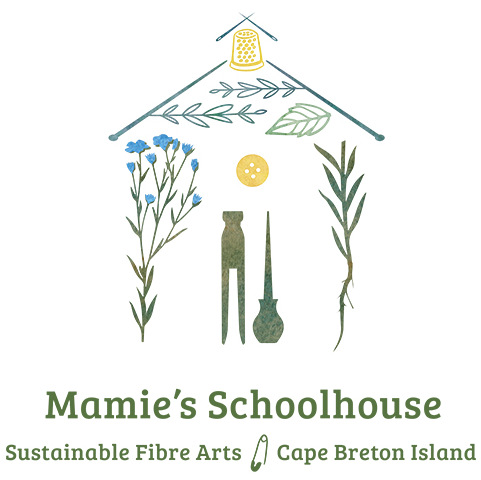Welcome!
Welcome to our collaborative blog! I'm Mel Sweetnam, of Mamie's Schoolhouse. I am privileged to be working with the marvellous group of global dyers who have decided to join me on this adventure to recreate the 1,800 year old dye methods found in the Leyden and Stockholm Papyri (learn about the papyri here, and about the dyers here).
I am fascinated by the long arc of incremental human knowledge - each generation building on what our ancestors learned - and also by the ways in which hard-won knowledge and skills are sometimes forgotten or lost to us.
I feel an obligation to help preserve and build awareness of the body of knowledge created by the practitioners who came before us. I have wanted to undertake a more systematic recreation of the papyri methods for quite some time, but the scale is quite daunting (there are 81 dye related methods in the two papyri).
This Spring, it occurred to me that there were likely others who would be interested in collaborating to recreate these methods, and that I could use the Natural Dye Education FB group I manage to reach them.
The Starting Line...
We've been working together for a couple of months now, and have already compiled some invaluable resources on terminology, historical context, textile styles of the period, how to collect urine from a camel (but more on that later!), and many other things. In some instances, more than one dyer is planning to recreate a given recipe, which should make for some interesting comparisons of interpretation and results.
One of the big question marks hanging over our endeavour is to what degree the methods in the papyri were intended to create good, colourfast dye results, and/or to what degree the methods were written as a kind of forger's handbook, designed to create results that impersonated those of dyed goods much in demand at the time - such as Tyrian Purple from the Murex mollusc - but through the use of far less costly ingredients.
As experienced natural dyers, we can read some of the papyri methods and know they will work to produce good dye results. Others, however, have us scratching our heads in wonderment at unusual ingredients or bewildering process steps. But therein lies the adventure of this project!
As experienced natural dyers, we can read some of the papyri methods and know they will work to produce good dye results. Others, however, have us scratching our heads in wonderment at unusual ingredients or bewildering process steps. But therein lies the adventure of this project!
Murex dyes.
Source: Wikimedia Commons
The Oldest Chemical Manuscripts...
“. . . neither papyrus contains the mystical symbolism and allegorical indirection so typical of the true alchemical literature. Rather they consist largely of simple, short recipes.”
We do know that in much of the first century after their re-discovery, they were regarded primarily as alchemical works (a view reinforced by the numerous methods for attempting to create the appearance of precious metals and gems). However, in the last century there has been a growing recognition of the papyri, instead, as recordings of experimental results, something we now recognize as a foundation of the modern science of chemistry. It was a chemist after all, Professor Earle Radcliffe Caley, who published the first full English translation, in the academic Journal of Chemical Education.
A Treasure of World Heritage...
These papyri are a record not just of Egyptian civilization at the time, but of much wider human civilization. While created in Thebes, the papyri are written in Greek, in a country under Roman rule. But long before Greek and then Roman occupation, Thebes was the beneficiary of vast trade routes in Africa, the Mediterranean, and stretching across Asia, along which knowledge and goods were exchanged for millennia. We can not know for certain, but it is possible that the use of some ingredients and methods in the papyri originated in lands far distant from Thebes. From Roman occupation onwards, trade routes expanded throughout much of Europe, too, and we do see some methods from the papyri being repeated, for example, in the Mappae Clavicula, a family of medieval texts in use across Europe from the 8th century AD onwards.
Please Join Us...
We hope you'll join us as we peer back through two millennia to try to interpret and recreate the world's oldest surviving written dye methods. Our hope is that through our collective effort, we can once again make these methods a living practice, relevant for current and future practitioners. We'll share our trials and our triumphs along the way - through word, images and video - as different project participants share their research process and insights over the coming months. Next year, we'll be mounting a virtual exhibit of finished fibre works using what we've learned through this collaborative endeavour, as well as submitting to one or more relevant conferences. You can sign up below to be notified when a new blog post is published.
With gratitude to the unknown scribe in Thebes, Egypt, who recorded these methods some 1,800 years ago,





